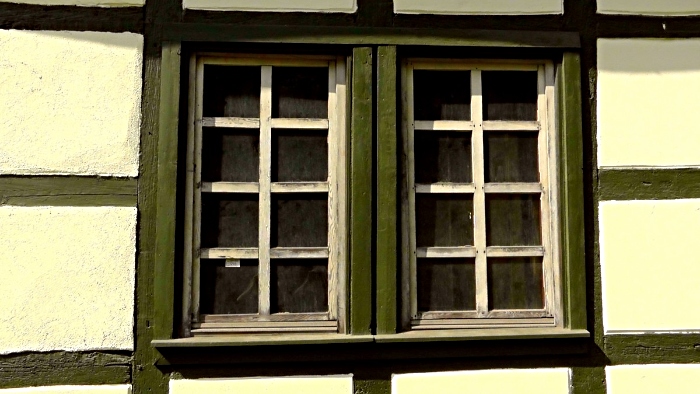
Sash wooden windows are more than just a functional part of your home – they’re a piece of history and a defining feature of traditional architecture.
However, without regular care, these windows can become a source of frustration, driving up energy bills and diminishing your property’s charm.
Neglecting maintenance can lead to serious issues, from rotting timber to costly replacements that could easily have been avoided.
This article explores the overlooked expenses that can arise from neglecting sash window maintenance.
If you’re a proud owner of a period property, understanding these pitfalls will help you make better decisions to preserve both your home and your wallet.
Why sash window maintenance is essential
Like any cherished piece of craftsmanship, sash windows need regular care to keep them in their prime.
Without maintenance, small issues like draughts or squeaky cords can develop into bigger problems like timber rot or warped sashes, leaving your windows inefficient and less appealing.
Regular care helps prevent costly fixes while ensuring your sash windows remain efficient, easy to use, and visually appealing.
Well-maintained sash windows can last for decades, preserving the charm of your home while helping you avoid the expense and hassle of full replacements.
Investing time and care into your windows is more than maintenance – it’s safeguarding a piece of history and a key aspect of your home’s personality.
Common issues with sash windows
1. Timber rot and decay
Timber frames are naturally susceptible to moisture, making them prone to rot if not properly sealed and maintained. This often starts in areas exposed to rain or condensation, such as window sills. Left unchecked, rot can spread to the entire frame, leading to structural instability and costly repairs.
2. Faulty sash cords
The cords that allow the smooth operation of sliding sash windows can wear out over time, fraying or breaking entirely. This makes the window difficult to operate and may require the replacement of not only the cords but sometimes the entire pulley system.
3. Draughts and energy loss
One of the most common complaints with sash windows is the loss of thermal efficiency. Drafty gaps around window frames not only reduce comfort but also drive up your energy costs. Installing draught-proofing systems can mitigate this issue.
4. Misaligned or stuck sashes
Over time, the movement of the sashes can become obstructed due to swelling, warping, or debris build-up in the tracks. This results in windows that are difficult to open or close, compromising their functionality.
5. Glass damage and pane replacement
Single-glazed panes are prone to cracking or breaking, especially in older sash windows. Damaged glass not only impacts insulation but also poses safety concerns. Replacing panes with double glazing for sash windows can improve both durability and energy efficiency.
When to consider sash window repair
Deciding between repair and replacement for sash windows often depends on several factors, including the severity of the damage, the historical significance of the property, and budget considerations.
Here are key points to evaluate:
Signs of damage: Common indicators that repairs are needed include visible timber rot, stuck or misaligned sashes, fraying sash cords, or cracked panes. These issues, if addressed promptly, can often be remedied without requiring a full window replacement.
Preserving period features: For listed buildings and period homes, retaining the original sash windows is crucial for maintaining the property’s character and value. In these cases, restoration by specialists, such as Scott James Sash Windows Reglazing Specialists, ensures compliance with preservation guidelines and achieves high-quality results.
Cost considerations: Repairs are usually far more budget-friendly than opting for complete replacements. Repairing timber frames, resealing joints, or installing new sash cords can significantly extend the lifespan of existing windows without incurring the high costs associated with full replacements.
Energy efficiency improvements: Modern repair techniques, such as draught-proofing and secondary glazing, enhance energy efficiency while preserving the aesthetic integrity of the windows.
Choosing professional repair services ensures that the windows’ functionality and appearance are restored to their optimal condition, minimizing future maintenance needs and costs.
How poor maintenance affects period properties
For listed buildings or period homes, neglecting sash windows can have far-reaching consequences beyond just aesthetics.
Neglected windows diminish the aesthetic appeal of a property and can also weaken its structural soundness.
For instance, timber rot or broken sash cords can lead to improper window function, potentially causing further damage to surrounding masonry or woodwork.
Moreover, many period properties are subject to strict preservation regulations.
Failure to maintain sash windows in compliance with these guidelines could result in costly penalties or require extensive renovation work to restore the property to its original state.
The historical and architectural significance of such buildings relies heavily on their authentic features, and sash windows are often a key element.
Beyond regulations, the financial cost of neglect can be significant. Damaged windows reduce thermal efficiency, driving up energy bills and detracting from the property’s overall value.
Regular maintenance not only preserves the charm of period properties but also ensures their long-term durability and compliance with heritage standards.
The cost of replacing sash windows
The cost of replacing sash windows can be substantial, influenced by factors like size, material, and design often exceeding the price of repair work:
Replacement costs: Prices for new sash windows typically range from £1,000 to £2,000 per window, though this can increase for bespoke designs, larger windows, or high-quality materials like hardwood timber.
Installation fees: Professional installation adds another layer of expense, often costing several hundred pounds per window. This ensures proper fitting but can make the total cost steep for period properties with multiple sash windows.
Impact on period homes: For listed buildings or homes in conservation areas, replacing original sash windows may require special permission and bespoke manufacturing to replicate the historical details, further driving up costs.
Conclusion
Neglecting sash windows increases costs and diminishes efficiency.
On the other hand, addressing repairs promptly can prolong your windows’ lifespan and save you from incurring substantial costs down the line.
Regular maintenance, including resealing joints, replacing cords, and repairing decayed timber, often costs a fraction of full replacement and preserves the character of your property.
(pic used under free licence)


















Recent Comments